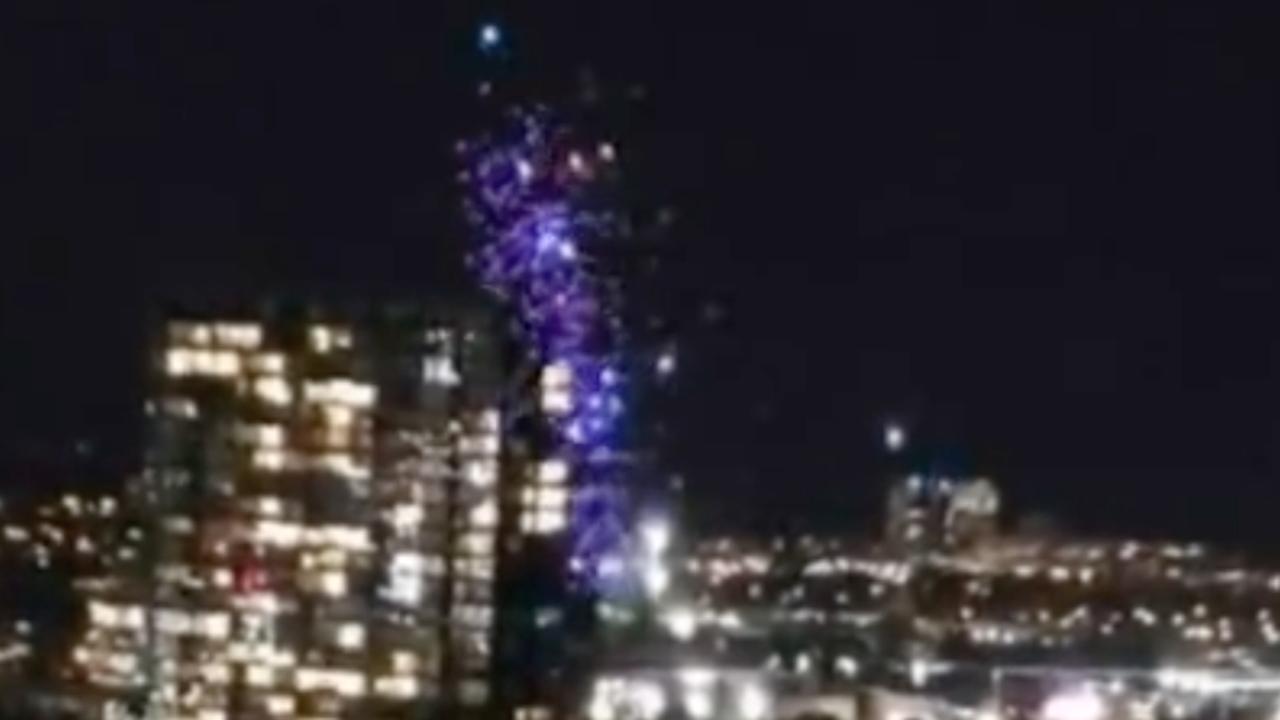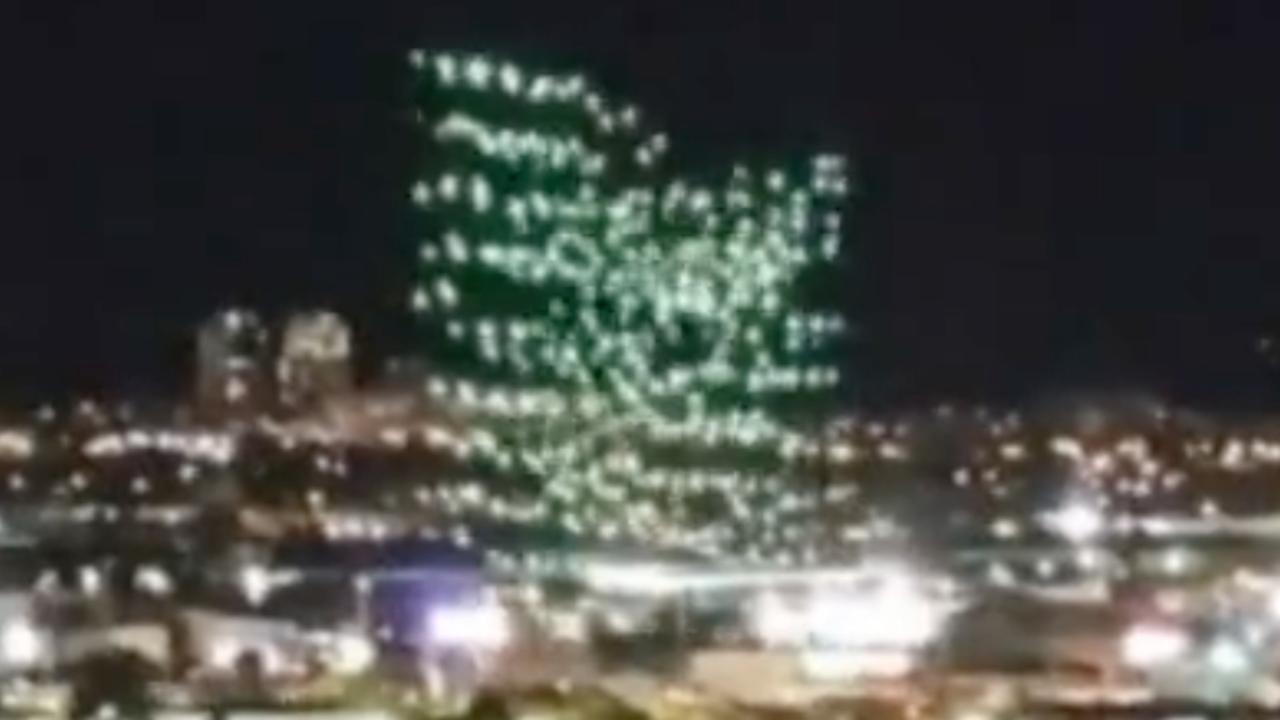Orlando Drone Show Malfunction: A spectacular light show over Orlando transformed into an unexpected spectacle when a technical malfunction disrupted the carefully choreographed drone display. This incident serves as a compelling case study exploring the intricacies of large-scale drone operations, highlighting the potential for unforeseen technical issues and the crucial role of safety protocols. We delve into the specifics of the event, examining the technical causes, safety response, public perception, and ultimately, the lessons learned for future drone shows.
The malfunction, occurring on [Insert Date and Time], involved [Number] drones of the [Drone Model] type, programmed for a [Theme] display. The failure initiated at [Time of Malfunction], with [Description of Initial Failure]. The subsequent events unfolded rapidly, resulting in [Summary of the Event’s Progression]. This analysis will dissect the event chronologically, analyzing both the technical and human factors that contributed to the incident and its aftermath.
The recent Orlando drone show malfunction sparked discussions about the reliability of large-scale drone displays. One might wonder if companies like sky elements drones , known for their advanced technology, could offer solutions to prevent such incidents. Ultimately, the Orlando incident highlights the need for robust safety protocols in the burgeoning field of drone light shows.
Orlando Drone Show Malfunction: A Comprehensive Analysis
This report details a significant malfunction during a drone light show in Orlando, examining the event’s circumstances, technical aspects, safety protocols, public reaction, and long-term implications for the drone entertainment industry. The analysis aims to provide a comprehensive understanding of the incident and identify key areas for improvement in future drone shows.
Event Details and Circumstances
The drone show, held on [Insert Date] at [Insert Time] in [Insert Location, Orlando], featured approximately [Insert Number] drones programmed to perform a choreographed display themed around [Insert Theme, e.g., a fantasy story, a patriotic display]. The drones, a model likely similar to [Insert Drone Model or Type if known, e.g., Intel Shooting Star drones], were designed to create intricate patterns and dynamic visual effects in the night sky.
The malfunction began at approximately [Insert Time of Malfunction] during [Insert Specific Part of Show, e.g., the climax of the show, a transition sequence]. Initially, a small cluster of drones began exhibiting erratic movements, deviating from their programmed flight paths. This quickly escalated; several drones began to move erratically, colliding with each other mid-air, causing a cascade effect. The once-coordinated display devolved into a chaotic swarm of blinking lights moving unpredictably across the sky.
The Orlando drone show malfunction highlights the complexities of large-scale drone operations. Such incidents underscore the need for robust safety protocols, a concern amplified when considering the scale and potential consequences of events like the recent ukraine drone attack on russia. The contrast between a malfunctioning entertainment display and a targeted military operation using similar technology is stark, prompting further discussion on drone regulation and oversight.
The show was abruptly halted, and the drones eventually landed in various locations, some slightly damaged.
Technical Aspects of the Malfunction
Several factors could have contributed to the malfunction. Potential causes range from software glitches within the drone’s flight control system to hardware failures in individual drones or interference from external sources. Loss of GPS signal, radio frequency interference, or even unexpected weather conditions (although unlikely given the nature of the event) could have played a role. A loss of control in even a small number of drones could trigger a chain reaction, leading to the widespread chaos observed.
Effective preventative measures could include robust redundancy in the flight control systems, enhanced GPS signal reception, and more sophisticated collision avoidance systems. Regular and thorough pre-flight checks of all drones, as well as rigorous testing of the show’s choreography in a controlled environment, are crucial.
| Potential Cause | Likelihood | Potential Consequences | Mitigation Strategies |
|---|---|---|---|
| Software Glitch | High | Loss of control, collisions, show interruption | Rigorous software testing, redundancy systems |
| Hardware Failure | Medium | Drone malfunction, potential damage, show interruption | Regular maintenance, pre-flight checks |
| GPS Signal Interference | Low | Navigation errors, collisions, show interruption | Multiple GPS sources, backup navigation systems |
| Radio Frequency Interference | Medium | Loss of communication, erratic movements | Frequency coordination, interference mitigation techniques |
Safety Protocols and Emergency Response
While specific details of the show’s safety protocols are not publicly available, standard practice for drone shows typically involves comprehensive pre-flight checks, designated flight zones, emergency shutdown procedures, and potentially the presence of safety personnel on the ground. The emergency response to the malfunction likely involved activating the emergency shutdown protocols, attempting to regain control of the errant drones, and securing the landing zone.
The effectiveness of these protocols in this case was clearly limited, highlighting the need for more robust contingency plans and fail-safes. Best practices include implementing multiple layers of safety protocols, redundancy in systems, and rigorous training for personnel involved in the show’s operation.
Recent reports detail a significant technical issue during a recent Orlando drone show, causing unexpected disruptions to the planned display. For a comprehensive account of the incident, including details on the malfunction and its impact, please refer to this report: orlando drone show malfunction. The aftermath involved investigations into the cause of the failure and subsequent adjustments to safety protocols for future drone light shows in Orlando.
Public Perception and Media Coverage

Social media immediately reacted to the incident with a mixture of awe, amusement, and concern. News reports varied in tone, with some focusing on the spectacular nature of the malfunction while others emphasized the potential safety risks. A range of perspectives emerged, reflecting the diverse opinions on technological advancements and the safety regulations governing drone operations. Many questioned the adequacy of existing safety measures, while others celebrated the show’s visual spectacle even in its failure.
- Widespread sharing of videos and photos on social media.
- Mixed reactions ranging from amusement to concern.
- News coverage highlighting both the spectacle and safety concerns.
- Discussions about the need for stricter regulations and safety protocols.
Long-Term Impacts and Lessons Learned, Orlando drone show malfunction
The incident serves as a stark reminder of the potential risks associated with large-scale drone displays. It is likely to prompt a review of existing safety regulations and lead to increased scrutiny of drone show permits. The industry will likely see improvements in technology, with a focus on more reliable flight control systems, enhanced collision avoidance capabilities, and more robust redundancy in the system’s architecture.
Improved communication protocols and emergency response plans are also essential.
- Increased emphasis on robust safety protocols.
- Development of more sophisticated fail-safe mechanisms.
- Investment in advanced collision avoidance technologies.
- More rigorous pre-flight checks and maintenance procedures.
The Orlando drone show malfunction serves as a stark reminder of the inherent risks involved in large-scale drone operations. While technological advancements continue to push the boundaries of what’s possible, robust safety protocols, rigorous testing, and proactive emergency response planning are paramount. The incident highlighted the importance of comprehensive risk assessment, contingency planning, and continuous improvement in both technology and operational procedures.
Moving forward, the lessons learned from this event should inform best practices across the drone show industry, ensuring safer and more reliable displays for audiences worldwide.
Question & Answer Hub
What type of drones were used in the Orlando show?
[Insert Drone Model and Specifications]
Were there any injuries reported as a result of the malfunction?
[Answer regarding injuries, if any]
What was the estimated cost of the damage caused by the malfunction?
[Insert estimated cost, if available]
What regulatory changes, if any, are being considered in response to this incident?
[Discuss potential regulatory changes or investigations]

